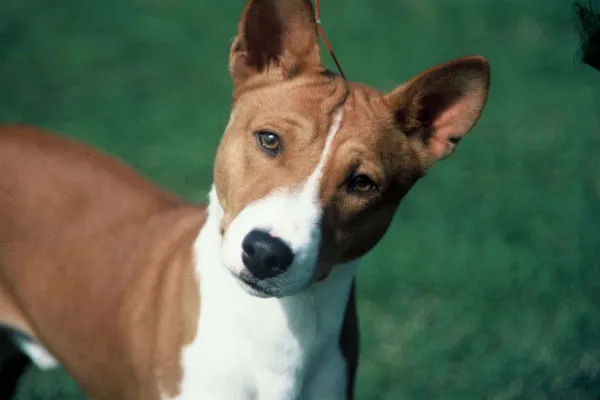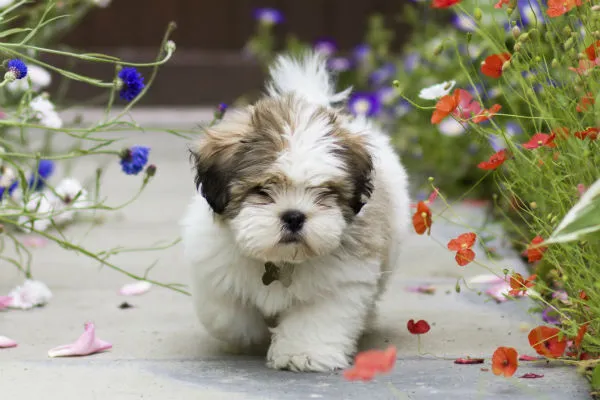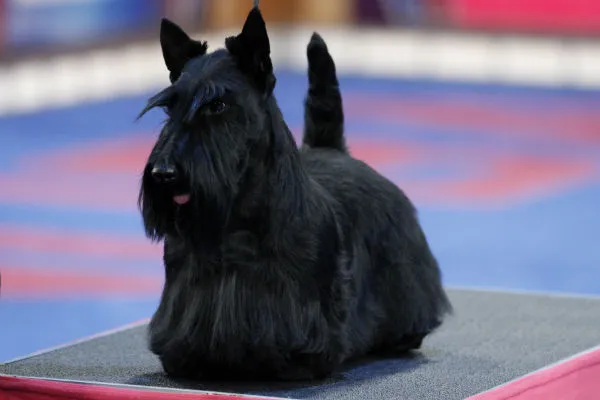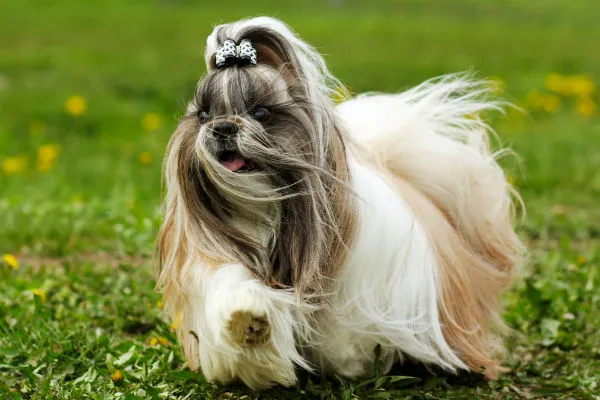For many dog lovers, the idea of sharing their home with a furry friend is wonderful, but the reality of constant shedding can be a significant drawback. Whether you’re an allergy sufferer, prioritize a clean home, or simply prefer less fuss, finding dog breeds that don’t shed and are small can feel like a quest. The good news is that numerous petite pups fit this description perfectly! These breeds offer all the companionship and charm of their larger counterparts, often with the added benefit of being easier to manage in smaller living spaces, and most importantly, leaving minimal to no hair behind.
Navigating the world of dog breeds can be overwhelming, especially when you have specific criteria like size and shedding. This guide aims to simplify your search by highlighting some of the most beloved small dog breeds known for their low-shedding or non-shedding coats. We’ll delve into their unique personalities, grooming requirements, and what makes them ideal companions for those seeking a tidy household. By understanding the needs of these adorable canines, you’ll be better equipped to choose a furry family member that perfectly aligns with your lifestyle. For an even broader selection, you might also explore other small dog breeds that stay small and don t shed.
Affenpinscher
 Affenpinscher dog with wiry, low-shedding black coat sitting on a wooden surface
Affenpinscher dog with wiry, low-shedding black coat sitting on a wooden surface
True to its German name, meaning “monkey-like terrier,” the Affenpinscher boasts an intelligent, mischievous expression and a distinctive wiry coat. Despite their small stature, these Toy breed dogs are remarkably fearless and make excellent, watchful companions. One of their most appealing characteristics for many owners is their minimal shedding. The Affenpinscher’s coarse, dense coat sheds very little and has almost no “doggy odor,” making them a great choice for those sensitive to dog hair or smells. While they don’t shed much, their coat does require some maintenance. A twice-weekly brushing with a slicker brush and comb is usually sufficient to prevent tangles and keep them looking tidy yet charmingly shaggy. Beyond their low-shedding qualities, Affenpinschers are celebrated for their playful personalities and sense of humor, bringing endless joy to their families.
Basenji
 Basenji dog standing outdoors, showcasing its short, fine, low-shedding coat
Basenji dog standing outdoors, showcasing its short, fine, low-shedding coat
Often called the “barkless dog,” the Basenji is a unique and ancient breed that appeals to those who appreciate hounds but not their typical shedding and distinct scent. This small dog breed stands out for its exceptionally minimal shedding, thanks to its short, fine coat. Beyond occasional brushing to remove loose hairs, the Basenji’s grooming needs are quite low, making them a very clean companion. Their quiet nature is another significant advantage, especially for apartment dwellers. However, despite their calm demeanor indoors, Basenjis are active and intelligent dogs that require daily exercise and mental stimulation to thrive. Providing ample playtime and walks will ensure a happy, well-adjusted Basenji, and you’ll love their self-grooming habits which further contribute to their low-maintenance appeal.
Bichon Frise
 Fluffy white Bichon Frise dog sitting cheerfully, highlighting its non-shedding coat
Fluffy white Bichon Frise dog sitting cheerfully, highlighting its non-shedding coat
The Bichon Frise is a quintessential non-shedding small dog breed, often recommended for individuals with allergies due to its hypoallergenic coat. These joyful and affectionate dogs are like living powder-puffs, radiating charm and playfulness. Their distinctive curly white coat is composed of hair that grows continuously, rather than fur that sheds. This means while you won’t find much hair around your home, the Bichon Frise is far from maintenance-free. Regular and frequent professional grooming or diligent at-home brushing and bathing are essential to prevent mats and tangles and to maintain their iconic fluffy appearance. Without consistent care, their coat can quickly become matted and uncomfortable. For families seeking a lively, cuddly companion who won’t leave a trail of hair, the Bichon Frise is an excellent choice, provided you’re committed to their grooming routine.
Bolognese
 Fluffy white Bolognese dog with distinct non-shedding coat, looking calm
Fluffy white Bolognese dog with distinct non-shedding coat, looking calm
Similar to their cousin, the Bichon Frise, the Bolognese is another delightful small dog breed that doesn’t shed. Their unique fluffy white coat is comprised of hair rather than fur, making them an excellent option for allergy sufferers and those seeking a clean home. While the Bolognese won’t leave hair scattered around, their coat does require regular attention. Dead hairs must be brushed out daily to prevent matting and maintain the coat’s pristine condition. These lovable lap dogs thrive on companionship and are known for their calm, devoted nature. Their relatively low energy levels make them well-suited for apartment living, as long as they receive their daily dose of gentle walks and indoor play. Committed grooming ensures these charming pups always look their best while offering a virtually shed-free living experience.
Brussels Griffon
 Alert Brussels Griffon dog with rough, low-shedding coat, standing outdoors
Alert Brussels Griffon dog with rough, low-shedding coat, standing outdoors
Don’t let the small size of the Brussels Griffon fool you; these intelligent and sturdy dogs are far from fragile. Available in both smooth-coated and rough-coated varieties, both types are minimal shedders, making them ideal for owners who prefer less hair around the house. The rough-coated Griffons shed even less and typically require hand-stripping a few times a year, along with regular brushing. Smooth-coated varieties have a fine, short coat that sheds slightly more but is still considered very low. Their modest size means that a daily walk combined with indoor play is usually enough to satisfy their exercise needs, making them adaptable to various living situations, including apartments. Brussels Griffons are renowned for their loyalty and thrive in homes where they receive plenty of attention and companionship, making them a devoted and low-shedding family member. If you are exploring the best small dog breeds that dont shed, the Brussels Griffon certainly makes the list.
Chinese Crested
 Hairless Chinese Crested dog with hair on head and tail, sitting gracefully
Hairless Chinese Crested dog with hair on head and tail, sitting gracefully
For those looking to completely avoid shedding, the Chinese Crested offers a unique solution. This small breed comes in two distinct varieties: the hairless and the powderpuff. The Hairless Chinese Crested has skin rather than fur, with hair only on its head, tail, and feet, naturally making them non-shedding. The Powderpuff variety, on the other hand, is covered in a soft, fine double coat of hair that sheds very minimally. While the hairless variety eliminates shedding, it introduces specific skincare needs. Their exposed skin requires protection from the sun in warm weather and warmth in colder climates. They are also more prone to skin irritations and dryness, necessitating regular moisturizing and bathing. Despite these special care considerations, both Chinese Crested varieties are affectionate, playful, and make dedicated companions for those prepared to meet their unique grooming and protective needs.
Coton De Tulear
 Fluffy white Coton de Tulear dog with long, hypoallergenic coat, looking sweet
Fluffy white Coton de Tulear dog with long, hypoallergenic coat, looking sweet
The Coton de Tulear, often called the “Royal Dog of Madagascar,” is celebrated for its distinctive, long, cotton-like coat that is not only beautiful but also considered hypoallergenic and non-shedding. This makes them an excellent choice for individuals with allergies or anyone who desires a dog that won’t leave hair everywhere. While their coat is a dream for allergy sufferers, it does demand consistent grooming to prevent mats and maintain its pristine, fluffy appearance. Daily brushing is typically required, alongside regular baths. Despite the grooming commitment, the Coton de Tulear’s lighthearted, gentle, and eager-to-please nature makes them incredibly rewarding companions. They are known for their playful antics and deep devotion to their families, adapting well to various living environments with their moderate exercise needs.
Havanese
 Charming Havanese dog with long, silky, non-shedding coat and bow in hair
Charming Havanese dog with long, silky, non-shedding coat and bow in hair
As the national dog of Cuba, the Havanese brings not only a patented spunky charm and intelligence but also a highly desirable non-shedding coat. This makes them a fantastic choice for those aiming to reduce the amount of dog hair in their home and on their furniture. Their long, silky hair, which can come in a variety of colors and patterns, requires regular maintenance to stay beautiful and tangle-free. Weekly brushing is essential, along with periodic professional grooming or at-home trims to prevent matting and keep them clean and healthy. Havanese are known for their playful and outgoing personalities, thriving on human companionship. They are intelligent and easily trained, making them wonderful family pets that love to be the center of attention, providing endless entertainment without the constant cleanup of shedding fur.
Maltese
 Elegant Maltese dog with long, flowing white, non-shedding hair
Elegant Maltese dog with long, flowing white, non-shedding hair
With a history spanning three millennia, the Maltese has charmed its way into human hearts as an ancient lapdog of nobility. Originating from the island of Malta, this breed has retained much of its original appeal, largely due to its striking long, white, silky coat that sheds very little. This characteristic makes them an ideal choice for allergy sufferers and those seeking a tidy companion. However, the Maltese’s luxurious coat requires dedicated grooming to prevent tangles and mats. Daily brushing is crucial, and regular baths are necessary to keep their pristine white hair free from dirt and debris. Despite the grooming demands, their affectionate, gentle, and playful nature makes them exceptional indoor companions. The Maltese is perfectly content to be a pampered lapdog but also enjoys short walks and playful interactions with their family.
Lhasa Apso
 Lhasa Apso dog with long, flowing hair covering its eyes, known for being non-shedding
Lhasa Apso dog with long, flowing hair covering its eyes, known for being non-shedding
Hailing from the high altitudes of Tibet, the Lhasa Apso was originally bred as watchdogs for monasteries and nobility. These small, sturdy dogs make excellent, vigilant companions, characterized by their calm yet playful demeanor. A significant advantage of the Lhasa Apso is their non-shedding coat, which is a thick, flowing double coat designed to protect them from harsh Himalayan weather. While they don’t shed, this impressive coat does require significant maintenance to prevent matting. Many owners opt for a “puppy cut” or shorter clip to reduce daily grooming and brushing efforts, making their care more manageable. Lhasa Apsos enjoy brisk walks and are equally content resting in their owner’s lap, forming strong bonds with their families. Their long lifespan and devoted nature make them a wonderful, low-shedding addition to any home.
Miniature Schnauzer
 Alert Miniature Schnauzer dog with classic wiry coat, a low-shedding breed
Alert Miniature Schnauzer dog with classic wiry coat, a low-shedding breed
The Miniature Schnauzer is a popular choice among small dog breeds that don’t shed. This intelligent, trainable, and cheerful Terrier strongly resembles its Standard Schnauzer cousin but in a more compact package. Their distinctive wiry double coat sheds very minimally, making them a great option for those seeking a cleaner home environment. To maintain their iconic appearance and coat health, weekly brushing is recommended, along with professional grooming every 5-8 weeks, which often includes clipping or hand-stripping. Miniature Schnauzers are highly adaptable, equally at home in a city apartment or a country dwelling, as long as they are close to their human companions. They possess a spirited, alert, and affectionate personality, making them excellent watchdogs and devoted family members.
Poodle (Miniature & Toy)
 Curly-coated Poodle sitting gracefully, a classic non-shedding dog breed
Curly-coated Poodle sitting gracefully, a classic non-shedding dog breed
Poodles are perhaps the most famous of all non-shedding and hypoallergenic dog breeds, and for good reason. Miniature and Toy Poodles offer these coveted qualities in petite, intelligent packages, differing only in size from their Standard Poodle relatives. Their unique curly coat is hair-like and grows continuously, trapping loose hairs rather than releasing them into the environment. This makes them an ideal choice for allergy sufferers. All Poodles are renowned for their exceptional intelligence, making them highly trainable and eager to please. They are active, proud, and playful dogs that require regular mental and physical stimulation. While they don’t shed, their dense, curly coat demands consistent professional grooming every 4-6 weeks to prevent matting and maintain their distinguished appearance.
Scottish Terrier
 Scottish Terrier dog with wiry, low-shedding coat standing on grass
Scottish Terrier dog with wiry, low-shedding coat standing on grass
The Scottish Terrier, affectionately known as a Scottie, is a distinctive Terrier breed celebrated for its boldness, confidence, and surprisingly big personality for its size. Their wiry, weather-resistant double coat sheds very little, making them an excellent contender for those seeking low-shedding small dogs. While their shedding is minimal, their coat does require regular maintenance. This includes weekly brushing, periodic professional grooming, and occasional hand-stripping to keep their coat healthy and preserve the breed’s iconic outline. Scotties are clever and independent dogs with strong prey drives, which means they require consistent training and supervision, especially around smaller animals. Despite their independent streak, they are fiercely loyal and devoted to their families, bringing a unique blend of charm and spirited companionship to the home.
Shih Tzu
 Shih Tzu dog with long, silky, non-shedding hair and a topknot
Shih Tzu dog with long, silky, non-shedding hair and a topknot
With a long and regal pedigree, the Shih Tzu was once the favored house pet of Chinese emperors during the Tang Dynasty. These “little lion dogs” come in a myriad of colors and patterns, all sporting a magnificent long, silky double coat that is very low-shedding. Their coat, when brushed out, looks exceptionally regal, befitting their royal ancestry, and makes them a highly sought-after non-shedding breed. Despite their luxurious appearance, Shih Tzus are sturdy, lively, and affectionate Toy dogs. Their gentle, trusting nature makes them exceptional companions, bred specifically for living indoors and showering their owners with love. While their shedding is minimal, their long coat does require daily brushing to prevent tangles and mats, along with regular trims or professional grooming to keep them comfortable and looking their best.
West Highland White Terrier
 West Highland White Terrier (Westie) with coarse, white, low-shedding hair
West Highland White Terrier (Westie) with coarse, white, low-shedding hair
The West Highland White Terrier, fondly known as a “Westie,” is a robust and spirited small dog breed characterized by its coarse, pure white double coat that sheds very little. This minimal shedding makes them a popular choice for those seeking a clean home environment. Westies are intelligent, loyal, happy, and highly entertaining companions with a lively personality. They possess a curious nature and moderate energy levels, enjoying daily walks and playtime. Like many Terriers, they have an independent streak that can sometimes make training a bit challenging, requiring patience and consistency. Regular grooming, including weekly brushing and professional trims every few months, is essential to maintain the health and appearance of their distinctive coat. Westies thrive on being part of the family and will keep you endlessly amused with their charming antics. For more options in this category, consider exploring small dogs breeds that don t shed.
Xoloitzcuintli (Mexican Hairless Dog)
 Hairless Xoloitzcuintli dog, showcasing its unique non-shedding skin
Hairless Xoloitzcuintli dog, showcasing its unique non-shedding skin
The Xoloitzcuintli, also known as the Mexican Hairless Dog, is an ancient and rare breed with a rich history. This breed uniquely offers two coat varieties: hairless and coated. The hairless Xolo is, as the name suggests, virtually hairless, retaining only a small tuft of hair on its head and sometimes on its paws and tail. This absence of fur naturally means they are non-shedding. The coated variety has a very short, fine, and smooth coat that sheds minimally, also making them an excellent low-shedding option. As with any hairless breed, the Xolo requires special attention to its skin, including protection from sun exposure and cold weather, and regular moisturizing. Xolos are known for their tranquil personality around the home, making them attentive watchdogs and affectionate companions. While they enjoy physical activities like vigorous play and walks, they are equally content to relax by your side, offering a unique and shed-free companionship experience.
Yorkshire Terrier
 Yorkshire Terrier (Yorkie) with long, silky, non-shedding hair and an inquisitive expression
Yorkshire Terrier (Yorkie) with long, silky, non-shedding hair and an inquisitive expression
The Yorkshire Terrier, affectionately called the Yorkie, is a feisty, tomboyish, and affectionate Toy breed packed with personality. Despite their regal appearance and silky coats, Yorkies have working-class roots, originally hunting rats in English clothing mills. Today, they are just as happy to sit on an owner’s lap as they are exploring. One of their most beloved traits is their non-shedding coat, which is similar to human hair in texture and grows continuously. This makes them an excellent choice for allergy sufferers and those who want to avoid dog hair around the house. Their beautiful, silky coats require daily brushing to prevent tangles and mats and to maintain their lustrous appearance. Despite their small size, Yorkies are full of confidence and zest for life, making them incredibly popular and devoted companions that offer a shed-free environment.
Beyond the List: Understanding Low-Shedding & Grooming Needs
Many people believe that “non-shedding” means “no grooming,” but this is a common misconception. Most small dog breeds that don’t shed, or shed minimally, have hair that grows continuously, much like human hair. This characteristic is precisely what prevents them from shedding copious amounts of fur around your home. However, it also means that their coats will continue to grow and can become matted, tangled, or dirty without proper care.
Therefore, owners of these wonderful breeds must commit to a regular grooming regimen. This typically includes:
- Daily or weekly brushing: To prevent tangles, remove loose hairs that get caught in the coat, and distribute natural oils.
- Regular bathing: To keep their coats clean and healthy.
- Professional grooming or at-home trims: Many breeds require haircuts every 4-8 weeks to maintain their coat length and prevent it from becoming unmanageable. Hand-stripping might be necessary for certain wiry-coated Terrier breeds.
The Terrier group, in general, is a treasure trove of small dogs that shed very little or not at all. Their wiry and coarse hair textures naturally shed less compared to other coat types, making them ideal small dogs for people who prefer minimal hair cleanup. While we’ve highlighted many, other low-shedding Terrier breeds exist that might also catch your eye. To broaden your search, consider looking into small medium dog breeds that dont shed for even more choices.
Choosing Your Perfect Small, Non-Shedding Companion
Selecting a dog is a significant decision, and finding a small dog breed that doesn’t shed offers a fantastic solution for many households, particularly those dealing with allergies or a desire for a cleaner living space. While the absence of shedding is a major perk, remember that these dogs still require commitment in terms of grooming. Their continuous hair growth means regular brushing, bathing, and often professional trims are essential to keep them comfortable and looking their best.
Beyond shedding, always consider the breed’s temperament, exercise needs, and overall care requirements to ensure a good match for your lifestyle. A low-shedding coat doesn’t negate the need for socialization, training, and veterinary care. Take the time to carefully research each breed, and when you’re ready to welcome a new furry friend, always choose a reputable breeder or consider adopting from a shelter. A well-cared-for, low-shedding small dog can bring immense joy and companionship to your home for many years to come, truly becoming a cherished member of your family. If you’re looking for further curated recommendations, check out the best small dog breeds that dont shed.
